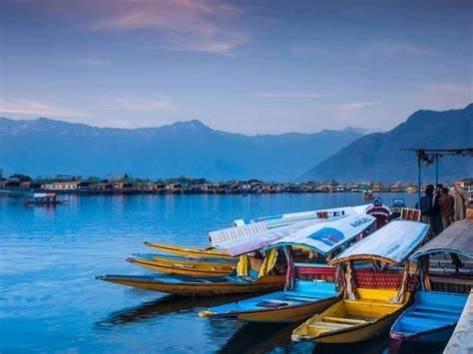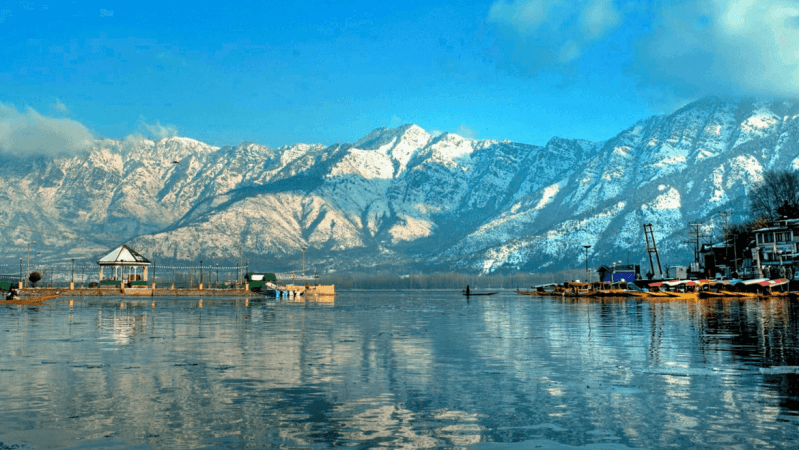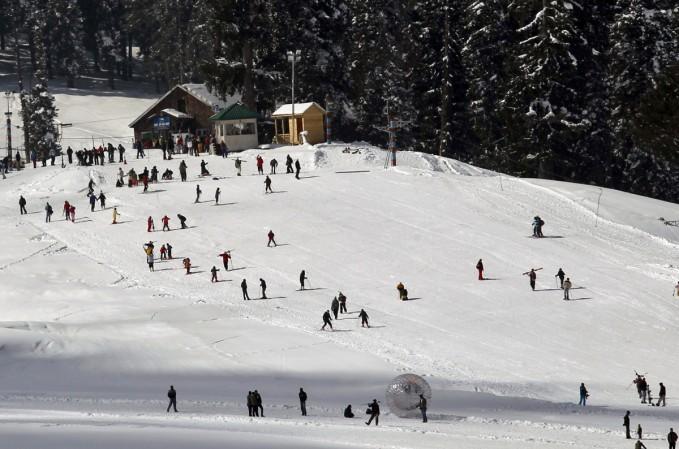Lakhs of tourists visiting Jammu and Kashmir during the past three years have infused new life into the tourism industry in the Himalayan region. Hotels from zero-occupancy are witnessing full occupancy and the government is encouraging home stays to accommodate the huge influx of tourists.
The tourism industry had taken a severe hit after a Pakistan sponsored insurgency broke out in Jammu and Kashmir in 1989. It shattered the tourism sector as the number of tourists visiting Kashmir declined drastically.

Kashmir until 1988, with over 700,000 arrivals was one of the most preferred destinations for national and international tourists. In 1989, Pakistan-sponsored ultras appeared on the streets of Kashmir with guns and grenades which led to tourists saying goodbye to the valley.
In 1990 and 1991, 4,211 and 3,780 violent incidents were reported thereby bringing tourist arrivals to a meagre 6,287 tourists, a 98 per cent decrease from tourist arrivals since 1989.
In early 1996, Assembly elections were conducted after eight years of the Governor's rule. With a civilian government in place over 100,000 visitors arrived in Kashmir in 1998. Four years later, India and Pakistan were at the brink of war following the December 13, 2001 attack on Parliament. Assembly elections held in the same year in Jammu and Kashmir in September were also marred by violence.
Consequently, tourist inflow declined sharply in 2002, falling to 27,356. From the start of the India-Pakistan peace process in 2003 till 2012 tourist figures climbed steadily to over 1.3 million. In 2015, the numbers fell below 1 million, but this time because floods had devastated Kashmir in September 2014, affecting its tourism infrastructure badly.
In 2016, the tourist arrivals had started picking up but the unrest which broke out in Kashmir after the killing of a Hizbul-Mujahideen militant, Burhan Wani, sparked a prolonged chain of street protests that were orchestrated at the behest of Pakistan.

The aftershocks of the violence that Kashmir witnessed in 2016, were felt in 2017, 2018 and 2019 as no one wanted to visit the valley. The tourism sector in Kashmir during these years witnessed its worst crisis with many hotels closing down, staff being laid off and players in the industry looking for alternative businesses or even job opportunities.
Tourism, considered as the backbone Jammu and Kashmir's economy, was pushed to the brink. Even with hotels offering discounts as high as 70 per cent, occupancy rates were less than 5 per cent at a time. In houseboats on Dal Lake, Nigeen Lake and river Jhelum the occupancy was as low as 1-2 per cent.
Turning Point
On August 5, 2019, the Centre announced its decision to abrogate Jammu and Kashmir's special status and bifurcated it into two Union Territories. The cynics predicted that Kashmir would burn and no one would visit the Valley, but the time has proven them wrong as Kashmir since then has been witnessing bumper tourism seasons and the Centre's bold move came as a turning point in the history of Jammu and Kashmir's tourism sector.
Despite the outbreak of Covid-19 pandemic, Kashmir received 41,267 tourists in 2020. As the virus lost its sting, the number of tourists visiting Kashmir increased manifold. In October and November, 2021, 2 lakh24000 tourists arrived in Kashmir which was the highest in the last seven years. Vigorous tourism promotions and iconic festivals created the buzz that resulted in a record footfall. And since then there has been no looking back.
1.05 crore tourists arrived in 6 months
Recently, Union Minister for Tourism, G.K. Reddy informed Parliament that 1.05 crore tourists have visited Jammu and Kashmir from January to June this year.
Most of the tourist places like Gulmarg Pahalgam and Sonamarg ran out of hotel rooms to accommodate the rush of tourists. Hotel owners, who used to run in losses and had almost given up hope, have got a new lease of life. Tourists arriving in droves have lifted their spirits.
Home-stays, tented colonies
The Tourism Department in Jammu and Kashmir during the past few months has taken new initiatives to accommodate the tourists. The home stays and tented accommodations are being set up at major tourist spots. Adventure activities, new trekking routes, and border tourism are the new focus areas.
According to the officials as on date around 800 home-stays are registered with the Tourism Department, the government has set the target of enhancing the capacities of home-stays to 25,000 beds by the end of this year.

Since home-stays and tented accommodations are becoming popular among the domestic and foreign tourists as well as backpackers, the government is making efforts to promote tent stay at scenic locations that would prove to be a boon for the tourism sector. Till now, the Tourism Department has identified around 30 locations to set up the tented colonies.
The tourist destinations are being made more accessible, besides adding major attractions for the tourists, the Tourism Department has embarked on the mission to identify such tourist destinations where ropeways can also be developed.
Seventy-five offbeat tourist destinations have been identified and these are being developed with proper infrastructure and requisite facilities for the visitors. The public conveniences, utilities, parking facilities, sanitation facilities, cleanliness, signage and toilet units are coming up at the prominent places.
Proposals to develop five tourist destinations, three in Jammu and two in Kashmir Division viz:- Wular Lake and adjoining areas, Tosamaidan-Doodhpathri, Surinsar-Mansar, Basohli-Sarthal and Bhaderwah have been sent to the Government of India.
Srinagar Airport busiest place
Srinagar Airport has become one of the busiest places in Kashmir. In March this year the airport handled 90 flights with 15,014 passengers in a single day. The infrastructure has been upgraded at the airport to facilitate the passengers. Several help desks have been placed to ensure that travelers don't face any problems.

According to the new schedule airlines have been permitted to operate 55 flights daily. State-of-the-art landing and navigation facilities have been put in place.
The Airports Authority of India is all set to invest about Rs 1,500 crore for the construction of a new terminal building and six more aircraft parking stands to ensure a delightful travel experience. The existing size of 16,000 sq meters of Srinagar airport is all set to increase to 64,000 sq meters four times bigger than the existing terminal building. The capacity of 950 passengers per hour will be increased upto 3,000 passengers. The Srinagar airport is aiming to handle 65 lakh passengers from the existing 25 lakh in a year.
The Jammu-Srinagar National Highway is set to become an express highway. The work on the last phase of highway between Banihal to Ramban is going on at a fast pace and once it's completed the 260-km highway will become four lane. The train to Kashmir is not that far away. The first train between Kashmir to Kanyakumari is all set to chug by 2024.
Tourism capital
Jammu and Kashmir during the past two years and has become the tourism capital of India. Revival of the tourism industry has once again brought smiles on the faces of a common man, who during the past 32-years has been facing the onslaught sponsored by Pakistan. But things have changed during the past three years and people are reaping the dividends of a bold decision taken by the regime led by Prime Minister Narendra Modi. Jammu and Kashmir has been integrated completely with the Union of India and every Kashmiri is being treated at par with other citizens of the country.









!['Had denied Housefull franchise as they wanted me to wear a bikini': Tia Bajpai on turning down bold scripts [Exclusive]](https://data1.ibtimes.co.in/en/full/806605/had-denied-housefull-franchise-they-wanted-me-wear-bikini-tia-bajpai-turning-down-bold.png?w=220&h=138)



